1. Zarb GA, Schmitt A. The longitudinal clinical effectiveness of osseointegrated dental implants: the Toronto Study. Part II: the prosthetic results. J Prosthet Dent. 1990; 64:53–61. PMID:
2200880.

2. Burns DR, Unger JW, Elswick RK Jr, Beck DA. Prospective clinical evaluation of mandibular implant overdentures: part I--retention, stability, and tissue response. J Prosthet Dent. 1995; 73:354–363. PMID:
7783014.

3. Burns DR, Unger JW, Coffey JP, Waldrop TC, Elswick RK Jr. Randomized, prospective, clinical evaluation of prosthodontic modalities for mandibular implant overdenture treatment. J Prosthet Dent. 2011; 106:12–22. PMID:
21723989.

4. Ortegón SM, Thompson GA, Agar JR, Taylor TD, Perdikis D. Retention forces of spherical attachments as a function of implant and matrix angulation in mandibular overdentures: an in vitro study. J Prosthet Dent. 2009; 101:231–238. PMID:
19328276.

5. Geckili O, Bilhan H, Mumcu E, Dayan C, Yabul A, Tuncer N. Comparison of patient satisfaction, quality of life, and bite force between elderly edentulous patients wearing mandibular two implant-supported overdentures and conventional complete dentures after 4 years. Spec Care Dentist. 2012; 32:136–141. PMID:
22784321.

6. Geckili O, Bilhan H, Bilgin T. Impact of mandibular two-implant retained overdentures on life quality in a group of elderly Turkish edentulous patients. Arch Gerontol Geriatr. 2011; 53:233–236. PMID:
21183231.

7. Naert I, Alsaadi G, Quirynen M. Prosthetic aspects and patient satisfaction with two-implant-retained mandibular overdentures: a 10-year randomized clinical study. Int J Prosthodont. 2004; 17:401–410. PMID:
15382775.

8. Walton JN, Huizinga SC, Peck CC. Implant angulation: a measurement technique, implant overdenture maintenance, and the influence of surgical experience. Int J Prosthodont. 2001; 14:523–530. PMID:
12066698.
9. Geckili O, Bilhan H, Bilgin T. Locator attachments as an alternative to ball attachments in 2-implant retained mandibular overdentures. J Can Dent Assoc. 2007; 73:691–694.
10. Trakas T, Michalakis K, Kang K, Hirayama H. Attachment systems for implant retained overdentures: a literature review. Implant Dent. 2006; 15:24–34. PMID:
16569958.

11. Heckmann SM, Winter W, Meyer M, Weber HP, Wichmann MG. Overdenture attachment selection and the loading of implant and denture-bearing area. Part 2: a methodical study using five types of attachment. Clin Oral Implants Res. 2001; 12:640–647. PMID:
11737109.

12. Osman RB, Payne AG, Ma S. Prosthodontic maintenance of maxillary implant overdentures: a systematic literature review. Int J Prosthodont. 2012; 25:381–391. PMID:
22720290.
13. Bakke M, Holm B, Gotfredsen K. Masticatory function and patient satisfaction with implant-supported mandibular overdentures: a prospective 5-year study. Int J Prosthodont. 2002; 15:575–581. PMID:
12475165.
14. Bergendal T, Engquist B. Implant-supported overdentures: a longitudinal prospective study. Int J Oral Maxillofac Implants. 1998; 13:253–262. PMID:
9581412.
15. Karabuda C, Tosun T, Ermis E, Ozdemir T. Comparison of 2 retentive systems for implant-supported overdentures: soft tissue management and evaluation of patient satisfaction. J Periodontol. 2002; 73:1067–1070. PMID:
12296593.

16. MacEntee MI, Walton JN, Glick N. A clinical trial of patient satisfaction and prosthodontic needs with ball and bar attachments for implant-retained complete overdentures: three-year results. J Prosthet Dent. 2005; 93:28–37. PMID:
15623995.

17. Mumcu E, Bilhan H, Geckili O. The effect of attachment type and implant number on satisfaction and quality of life of mandibular implant-retained overdenture wearers. Gerodontology. 2012; 29:e618–e623. PMID:
21726276.

18. Kleis WK, Kämmerer PW, Hartmann S, Al-Nawas B, Wagner W. A comparison of three different attachment systems for mandibular two-implant overdentures: one-year report. Clin Implant Dent Relat Res. 2010; 12:209–218. PMID:
19416278.

19. Cune M, van Kampen F, van der Bilt A, Bosman F. Patient satisfaction and preference with magnet, bar-clip, and ball-socket retained mandibular implant overdentures: a cross-over clinical trial. Int J Prosthodont. 2005; 18:99–105. PMID:
15889656.

20. Davis DM, Packer ME. Mandibular overdentures stabilized by Astra Tech implants with either ball attachments or magnets: 5-year results. Int J Prosthodont. 1999; 12:222–229. PMID:
10635189.
21. Chaytor DV, Zarb GA, Schmitt A, Lewis DW. The longitudinal effectiveness of osseointegrated dental implants. The Toronto Study: bone level changes. Int J Periodontics Restorative Dent. 1991; 11:112–125. PMID:
1938184.
22. Donatsky O. Osseointegrated dental implants with ball attachments supporting overdentures in patients with mandibular alveolar ridge atrophy. Int J Oral Maxillofac Implants. 1993; 8:162–166. PMID:
8359871.
23. Boerrigter EM, van Oort RP, Raghoebar GM, Stegenga B, Schoen PJ, Boering G. A controlled clinical trial of implant-retained mandibular overdentures: clinical aspects. J Oral Rehabil. 1997; 24:182–190. PMID:
9131473.

24. Burns DR. Mandibular implant overdenture treatment: consensus and controversy. J Prosthodont. 2000; 9:37–46. PMID:
11074027.

25. Naert I, Alsaadi G, van Steenberghe D, Quirynen M. A 10-year randomized clinical trial on the influence of splinted and unsplinted oral implants retaining mandibular overdentures: peri-implant outcome. Int J Oral Maxillofac Implants. 2004; 19:695–702. PMID:
15508985.

26. Cehreli MC, Karasoy D, Kökat AM, Akça K, Eckert S. A systematic review of marginal bone loss around implants retaining or supporting overdentures. Int J Oral Maxillofac Implants. 2010; 25:266–277. PMID:
20369084.
27. Roos-Jansåker AM, Franke-Stenport V, Renvert S, Albrektsson T, Claffey N. Dog model for study of supracrestal bone apposition around partially inserted implants. Clin Oral Implants Res. 2002; 13:455–459. PMID:
12453120.

28. Brunski J, Block MS, Guerra LR. Biomechanics of dental implants. In : Block MS, Kent JN, Guerra L, editors. Implants in dentistry: essentials of endosseous implants for maxillofacial reconstruction. Philadelphia: W.B. Saunders;1997. p. 63–71.
29. Bilhan H, Mumcu E, Arat S. The comparison of marginal bone loss around mandibular overdenture-supporting implants with two different attachment types in a loading period of 36 months. Gerodontology. 2011; 28:49–57. PMID:
19682097.
30. Bergkvist G, Simonsson K, Rydberg K, Johansson F, Dérand T. A finite element analysis of stress distribution in bone tissue surrounding uncoupled or splinted dental implants. Clin Implant Dent Relat Res. 2008; 10:40–46. PMID:
18254739.

31. Bassetti RG, Bassetti MA, Kuttenberger J. Implant-assisted removable partial denture prostheses: a critical review of selected literature. Int J Prosthodont. 2018; 31:287–302. PMID:
29723327.

32. Wismeijer D, Tawse-Smith A, Payne AG. Multicentre prospective evaluation of implant-assisted mandibular bilateral distal extension removable partial dentures: patient satisfaction. Clin Oral Implants Res. 2013; 24:20–27.

33. Payne AG, Tawse-Smith A, Wismeijer D, De Silva RK, Ma S. Multicentre prospective evaluation of implant-assisted mandibular removable partial dentures: surgical and prosthodontic outcomes. Clin Oral Implants Res. 2017; 28:116–125. PMID:
26799154.

34. Starr NL. The distal extension case: an alternative restorative design for implant prosthetics. Int J Periodontics Restorative Dent. 2001; 21:61–67. PMID:
11829037.
35. Feinberg E. Precision attachment case restoration with implant abutments: a review with case reports. J Oral Implantol. 2011; 37:489–498. PMID:
20553159.

36. Pellecchia M, Pellecchia R, Emtiaz S. Distal extension mandibular removable partial denture connected to an anterior fixed implant-supported prosthesis: a clinical report. J Prosthet Dent. 2000; 83:607–612. PMID:
10842125.

37. Chronopoulos V, Sarafianou A, Kourtis S. The use of dental implants in combination with removable partial dentures: a case report. J Esthet Restor Dent. 2008; 20:355–364. discussion 365. PMID:
19120779.

38. Bilhan H. The role of the dental implant in removable partial dentures. In : Şakar O, editor. Removable partial dentures: a practitioners' manual. Cham: Springer International Publishing;2016. p. 195–208.
39. English CE. Bar patterns in implant prosthodontics. Implant Dent. 1994; 3:217–229. PMID:
7663462.

40. Machado AC, Cardoso L, Brandt WC, Henriques GE, de Arruda Nóbilo MA. Photoelastic analysis of the distribution of stress in different systems of overdentures on osseous-integrated implants. J Craniofac Surg. 2011; 22:2332–2336. PMID:
22134270.

41. Nishioka RS, de Vasconcellos LG, de Melo Nishioka LN. External hexagon and internal hexagon in straight and offset implant placement: strain gauge analysis. Implant Dent. 2009; 18:512–520. PMID:
20009605.

42. Rangert B, Gunne J, Glantz PO, Svensson A. Vertical load distribution on a three-unit prosthesis supported by a natural tooth and a single Brånemark implant. An in vivo study. Clin Oral Implants Res. 1995; 6:40–46. PMID:
7669866.

43. Haruta A, Matsushita Y, Tsukiyama Y, Sawae Y, Sakai N, Koyano K. Effects of mucosal thickness on the stress distribution and denture stability of mandibular implant-supported overdentures with unsplinted attachments in vitro. J Dent Biomech. 2011; 2011:894395. PMID:
21799705.
44. Menicucci G, Lorenzetti M, Pera P, Preti G. Mandibular implant-retained overdenture: finite element analysis of two anchorage systems. Int J Oral Maxillofac Implants. 1998; 13:369–376. PMID:
9638007.
45. Thayer HH, Caputo AA. Photoelastic stess analysis of overdenture attachments. J Prosthet Dent. 1980; 43:611–617. PMID:
6989977.
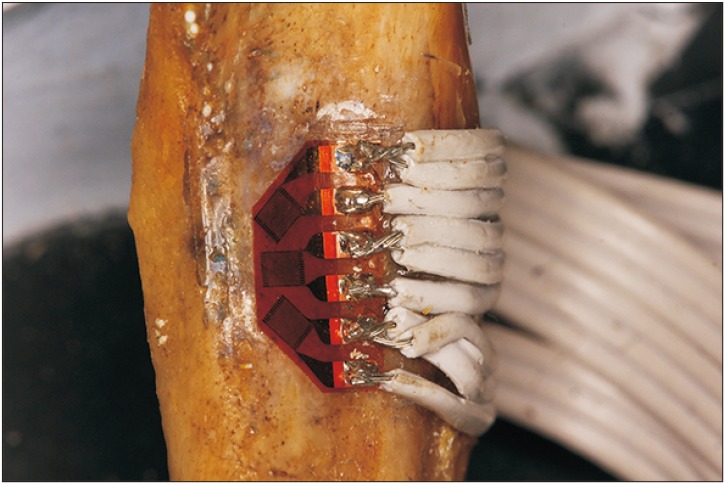
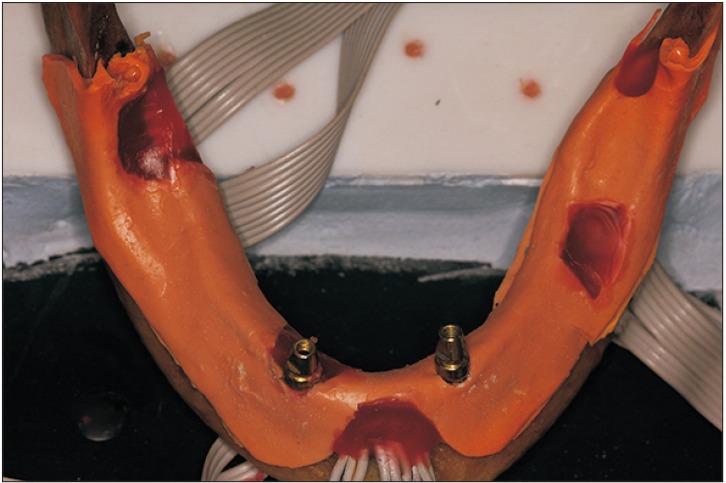
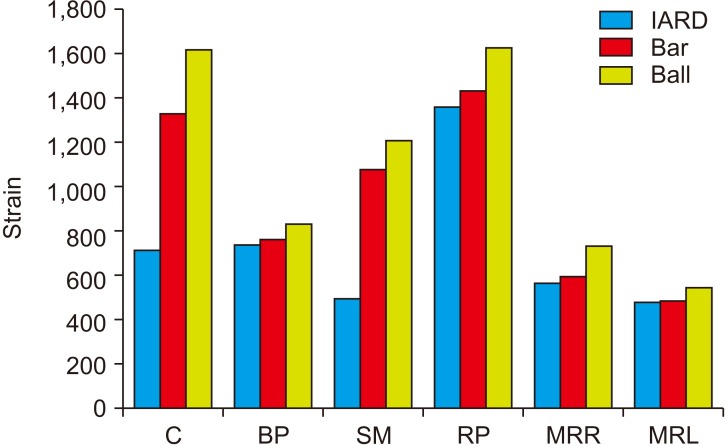
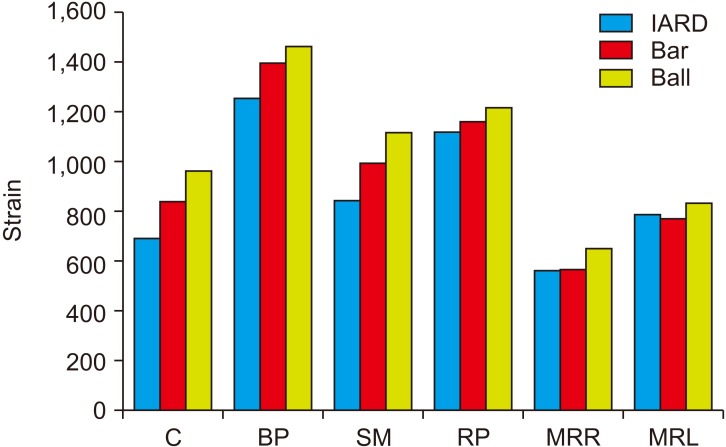
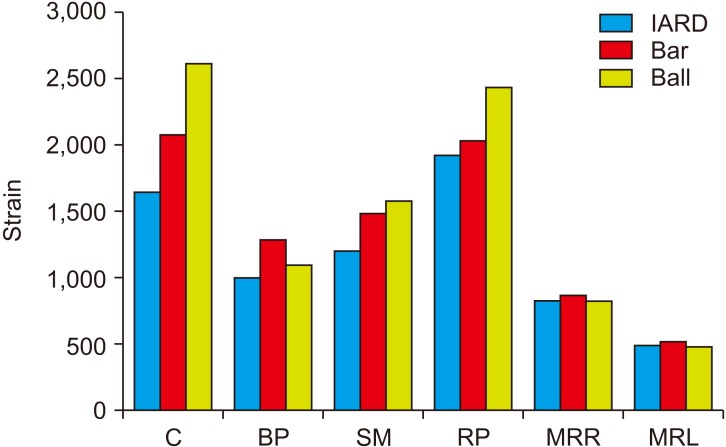
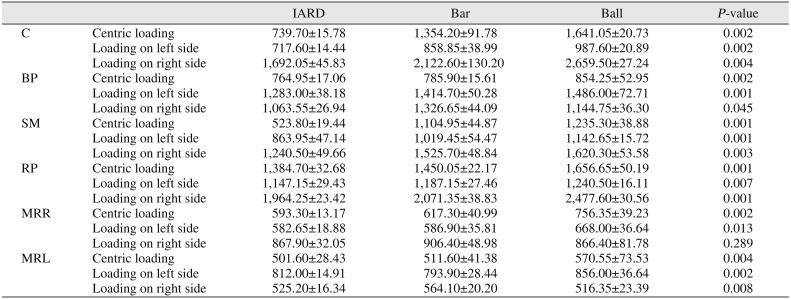





 PDF
PDF ePub
ePub Citation
Citation Print
Print



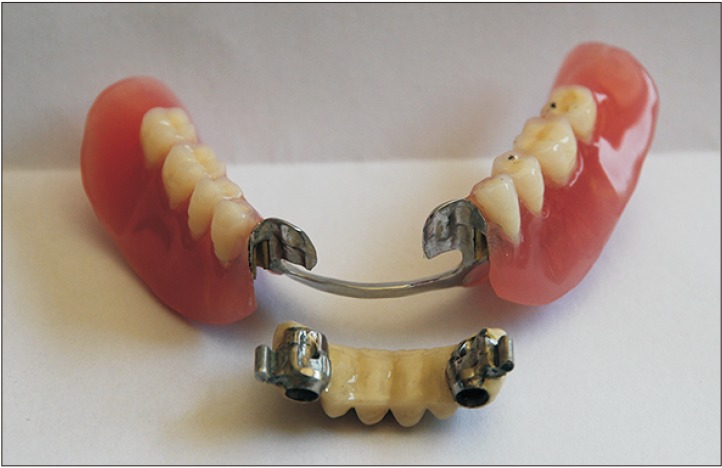
 XML Download
XML Download